
What are CRUD operations in a REST API?
November 6, 2023
CRUD stands for Create, Read, Update, and Delete. These are the four fundamental operations of persistent storage. In the context of RESTful APIs , they correspond to the HTTP methods POST, GET, PUT/PATCH, and DELETE.
Overview of CRUD in Rest API
When you're building a RESTful web service, you often need to provide these basic operations to interact with the underlying data source (like a database). Using these operations, clients can add, retrieve, modify, or delete data.
HTTP Methods and CRUD
CREATE: POST
To add new data to the server, the HTTP POST method is used.
POST /items/
Example request payload:
{ "name": "Laptop", "price": 1000 }
READ: GET
To retrieve data, the HTTP GET method is used.
Retrieve all items:
GET /items/
Retrieve a specific item:
GET /items/1/
UPDATE: PUT & PATCH
There are two primary HTTP methods for updating data: PUT and PATCH. The difference lies in how they handle the update.
- PUT: Updates the entire resource. If you omit some fields, it may set them to null or default values.
PUT /items/1/
Example request payload:
{ "name": "Desktop", "price": 900 }
- PATCH: Partially updates a resource. You can provide only the fields you want to change.
PATCH /items/1/
Example request payload:
{ "price": 950 }
DELETE
To remove a resource, the HTTP DELETE method is used.
DELETE /items/1/
Status Codes
HTTP status codes provide information about the outcome of a request. For CRUD operations, these are some common status codes:
200 OK: Successful GET or PATCH/PUT request.201 Created: Successful POST request.204 No Content: Successful DELETE request.400 Bad Request: The request was invalid or cannot be served.404 Not Found: The requested resource couldn't be found.405 Method Not Allowed: The HTTP method used isn't supported for this resource.
You could ship faster.
Imagine the time you'd save if you never had to build another internal tool, write a SQL report, or manage another admin panel again. Basedash is built by internal tool builders, for internal tool builders. Our mission is to change the way developers work, so you can focus on building your product.
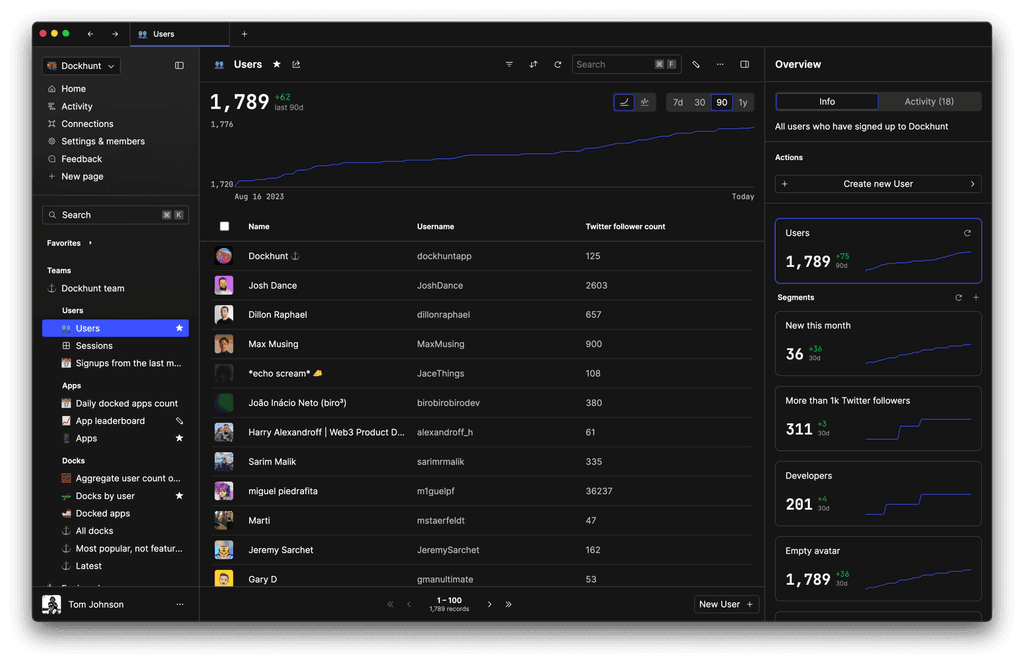
Advantages of CRUD in REST API
- Standardization: By adhering to the CRUD convention, developers have a standard way of understanding and using APIs.
- Clear Semantics: The use of standard HTTP methods (POST, GET, PUT, DELETE) provides clarity in intent.
- Ease of Integration: Many tools and libraries are built around the CRUD convention, making integration simpler.
Best Practices
- Use Nouns for Resource Names: The resource name in the URL should be a noun (e.g.,
/items/), not a verb. - Statelessness: Each request from a client should contain all the information needed to understand and process the request.
- Error Handling: Always provide clear error messages and relevant HTTP status codes.
- Versioning: It's good practice to version your API so that changes don't break existing clients. Example:
/v1/items/. - Use Authentication & Authorization: Protect your API endpoints, especially the ones that modify data.
Conclusion
CRUD operations in RESTful APIs represent a straightforward and effective way of managing data over the web. By understanding and correctly implementing these operations, developers can build robust and user-friendly APIs.
TOC
November 6, 2023
CRUD stands for Create, Read, Update, and Delete. These are the four fundamental operations of persistent storage. In the context of RESTful APIs , they correspond to the HTTP methods POST, GET, PUT/PATCH, and DELETE.
Overview of CRUD in Rest API
When you're building a RESTful web service, you often need to provide these basic operations to interact with the underlying data source (like a database). Using these operations, clients can add, retrieve, modify, or delete data.
HTTP Methods and CRUD
CREATE: POST
To add new data to the server, the HTTP POST method is used.
POST /items/
Example request payload:
{ "name": "Laptop", "price": 1000 }
READ: GET
To retrieve data, the HTTP GET method is used.
Retrieve all items:
GET /items/
Retrieve a specific item:
GET /items/1/
UPDATE: PUT & PATCH
There are two primary HTTP methods for updating data: PUT and PATCH. The difference lies in how they handle the update.
- PUT: Updates the entire resource. If you omit some fields, it may set them to null or default values.
PUT /items/1/
Example request payload:
{ "name": "Desktop", "price": 900 }
- PATCH: Partially updates a resource. You can provide only the fields you want to change.
PATCH /items/1/
Example request payload:
{ "price": 950 }
DELETE
To remove a resource, the HTTP DELETE method is used.
DELETE /items/1/
Status Codes
HTTP status codes provide information about the outcome of a request. For CRUD operations, these are some common status codes:
200 OK: Successful GET or PATCH/PUT request.201 Created: Successful POST request.204 No Content: Successful DELETE request.400 Bad Request: The request was invalid or cannot be served.404 Not Found: The requested resource couldn't be found.405 Method Not Allowed: The HTTP method used isn't supported for this resource.
You could ship faster.
Imagine the time you'd save if you never had to build another internal tool, write a SQL report, or manage another admin panel again. Basedash is built by internal tool builders, for internal tool builders. Our mission is to change the way developers work, so you can focus on building your product.

Advantages of CRUD in REST API
- Standardization: By adhering to the CRUD convention, developers have a standard way of understanding and using APIs.
- Clear Semantics: The use of standard HTTP methods (POST, GET, PUT, DELETE) provides clarity in intent.
- Ease of Integration: Many tools and libraries are built around the CRUD convention, making integration simpler.
Best Practices
- Use Nouns for Resource Names: The resource name in the URL should be a noun (e.g.,
/items/), not a verb. - Statelessness: Each request from a client should contain all the information needed to understand and process the request.
- Error Handling: Always provide clear error messages and relevant HTTP status codes.
- Versioning: It's good practice to version your API so that changes don't break existing clients. Example:
/v1/items/. - Use Authentication & Authorization: Protect your API endpoints, especially the ones that modify data.
Conclusion
CRUD operations in RESTful APIs represent a straightforward and effective way of managing data over the web. By understanding and correctly implementing these operations, developers can build robust and user-friendly APIs.
November 6, 2023
CRUD stands for Create, Read, Update, and Delete. These are the four fundamental operations of persistent storage. In the context of RESTful APIs , they correspond to the HTTP methods POST, GET, PUT/PATCH, and DELETE.
Overview of CRUD in Rest API
When you're building a RESTful web service, you often need to provide these basic operations to interact with the underlying data source (like a database). Using these operations, clients can add, retrieve, modify, or delete data.
HTTP Methods and CRUD
CREATE: POST
To add new data to the server, the HTTP POST method is used.
POST /items/
Example request payload:
{ "name": "Laptop", "price": 1000 }
READ: GET
To retrieve data, the HTTP GET method is used.
Retrieve all items:
GET /items/
Retrieve a specific item:
GET /items/1/
UPDATE: PUT & PATCH
There are two primary HTTP methods for updating data: PUT and PATCH. The difference lies in how they handle the update.
- PUT: Updates the entire resource. If you omit some fields, it may set them to null or default values.
PUT /items/1/
Example request payload:
{ "name": "Desktop", "price": 900 }
- PATCH: Partially updates a resource. You can provide only the fields you want to change.
PATCH /items/1/
Example request payload:
{ "price": 950 }
DELETE
To remove a resource, the HTTP DELETE method is used.
DELETE /items/1/
Status Codes
HTTP status codes provide information about the outcome of a request. For CRUD operations, these are some common status codes:
200 OK: Successful GET or PATCH/PUT request.201 Created: Successful POST request.204 No Content: Successful DELETE request.400 Bad Request: The request was invalid or cannot be served.404 Not Found: The requested resource couldn't be found.405 Method Not Allowed: The HTTP method used isn't supported for this resource.
You could ship faster.
Imagine the time you'd save if you never had to build another internal tool, write a SQL report, or manage another admin panel again. Basedash is built by internal tool builders, for internal tool builders. Our mission is to change the way developers work, so you can focus on building your product.

Advantages of CRUD in REST API
- Standardization: By adhering to the CRUD convention, developers have a standard way of understanding and using APIs.
- Clear Semantics: The use of standard HTTP methods (POST, GET, PUT, DELETE) provides clarity in intent.
- Ease of Integration: Many tools and libraries are built around the CRUD convention, making integration simpler.
Best Practices
- Use Nouns for Resource Names: The resource name in the URL should be a noun (e.g.,
/items/), not a verb. - Statelessness: Each request from a client should contain all the information needed to understand and process the request.
- Error Handling: Always provide clear error messages and relevant HTTP status codes.
- Versioning: It's good practice to version your API so that changes don't break existing clients. Example:
/v1/items/. - Use Authentication & Authorization: Protect your API endpoints, especially the ones that modify data.
Conclusion
CRUD operations in RESTful APIs represent a straightforward and effective way of managing data over the web. By understanding and correctly implementing these operations, developers can build robust and user-friendly APIs.
What is Basedash?
What is Basedash?
What is Basedash?
Ship faster, worry less with Basedash
Ship faster, worry less with Basedash
Ship faster, worry less with Basedash
You're busy enough with product work to be weighed down building, maintaining, scoping and developing internal apps and admin panels. Forget all of that, and give your team the admin panel that you don't have to build. Launch in less time than it takes to run a standup.
You're busy enough with product work to be weighed down building, maintaining, scoping and developing internal apps and admin panels. Forget all of that, and give your team the admin panel that you don't have to build. Launch in less time than it takes to run a standup.
You're busy enough with product work to be weighed down building, maintaining, scoping and developing internal apps and admin panels. Forget all of that, and give your team the admin panel that you don't have to build. Launch in less time than it takes to run a standup.
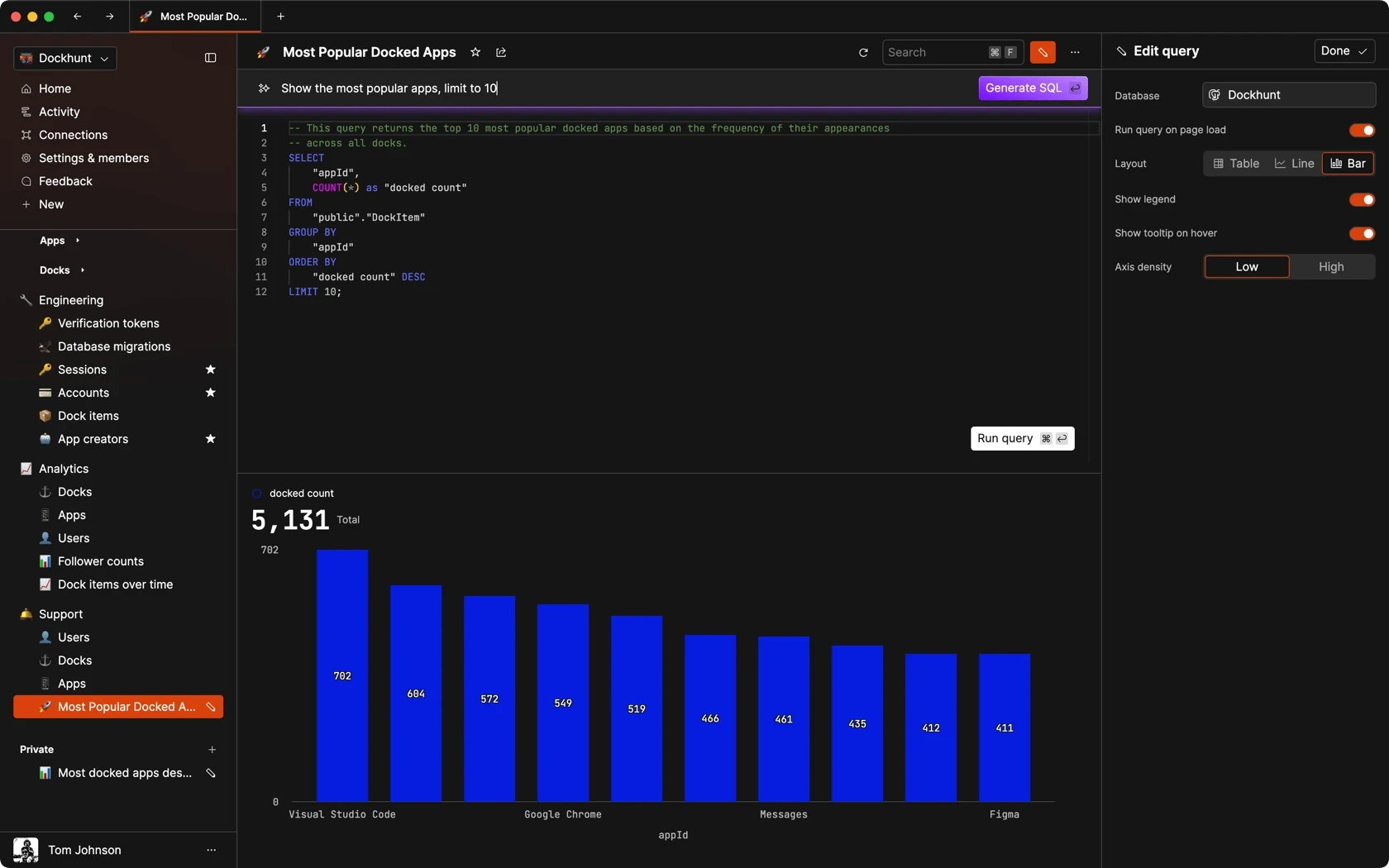
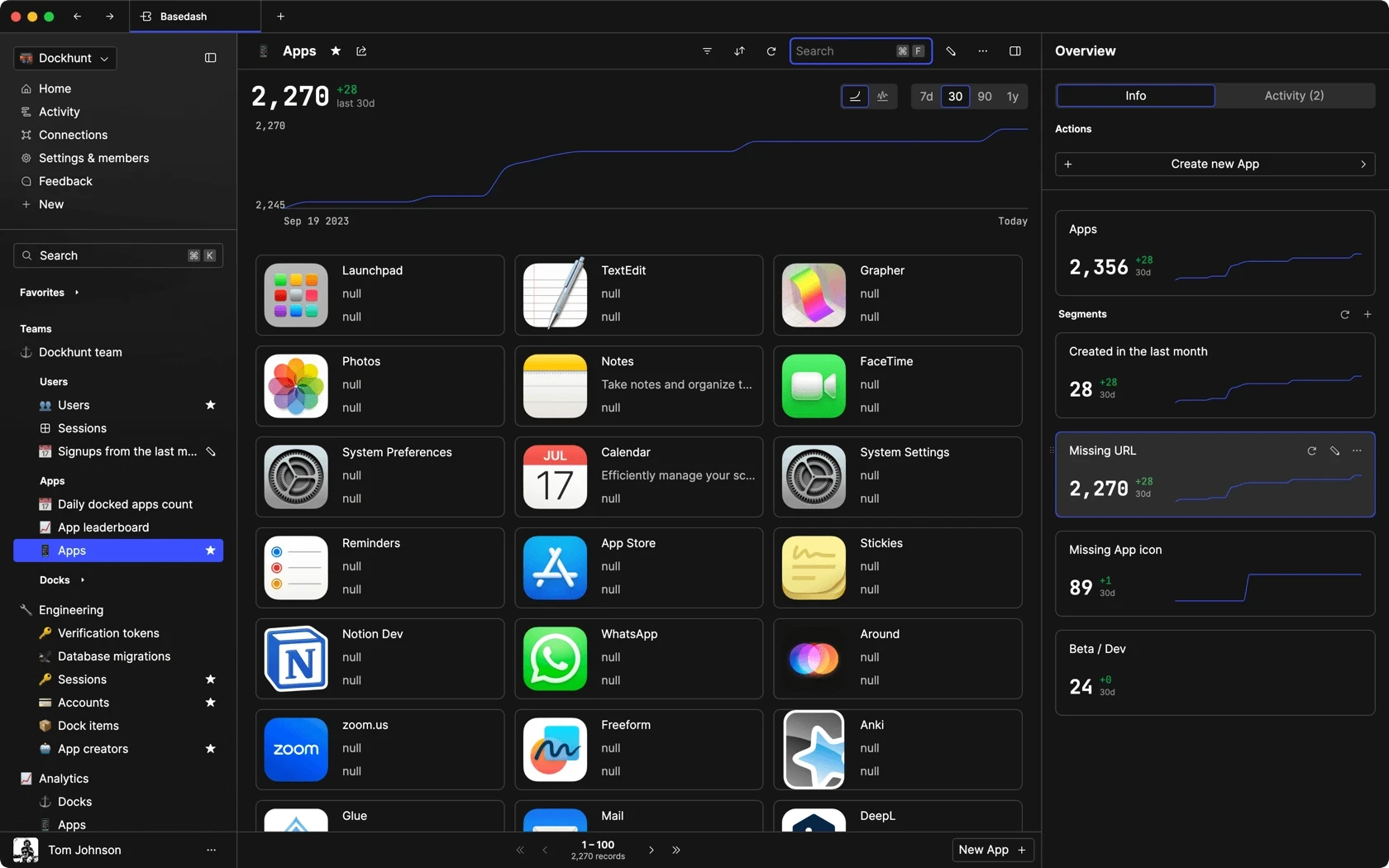
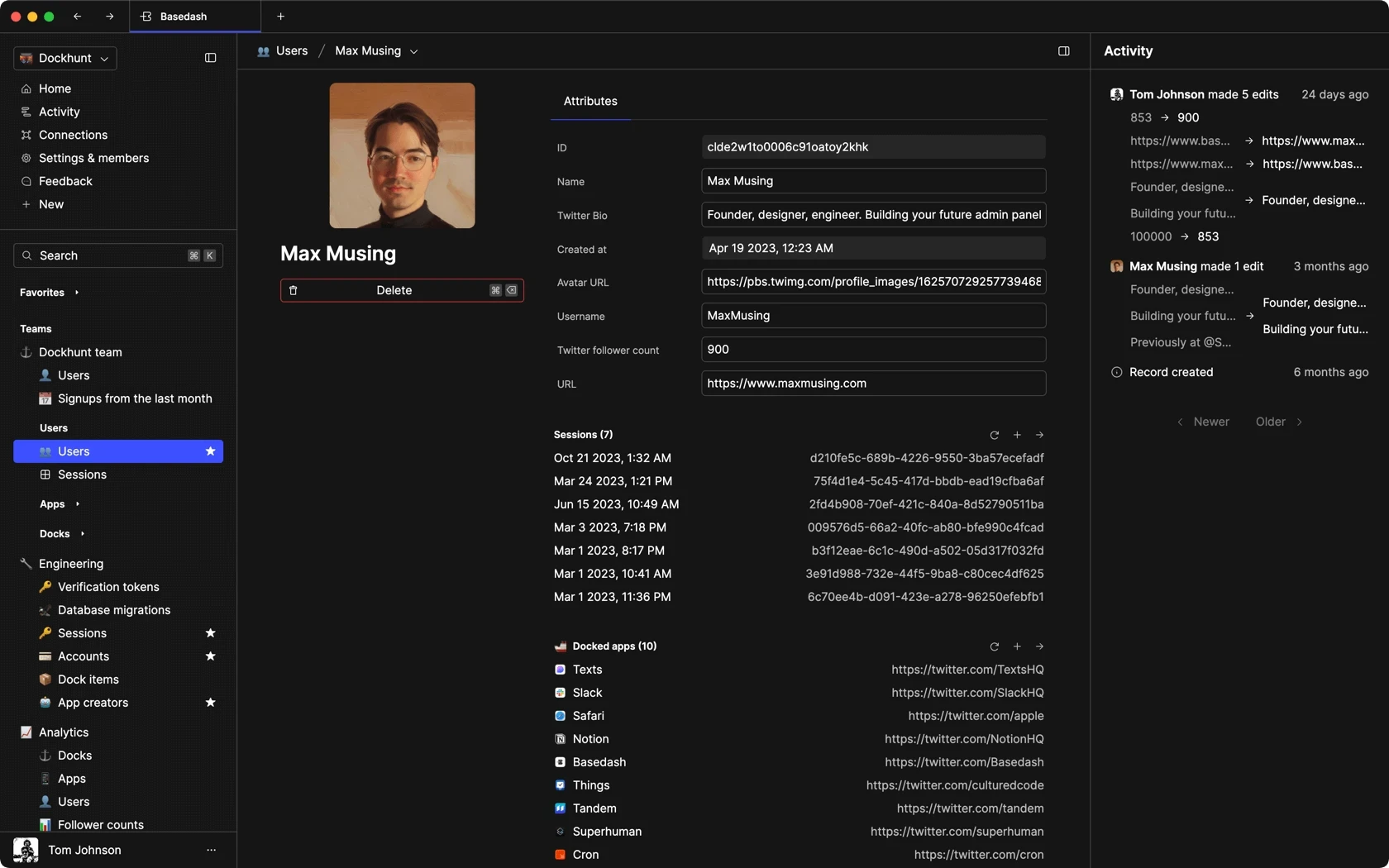

Dashboards and charts
Edit data, create records, oversee how your product is running without the need to build or manage custom software.
USER CRM
ADMIN PANEL
SQL COMPOSER WITH AI
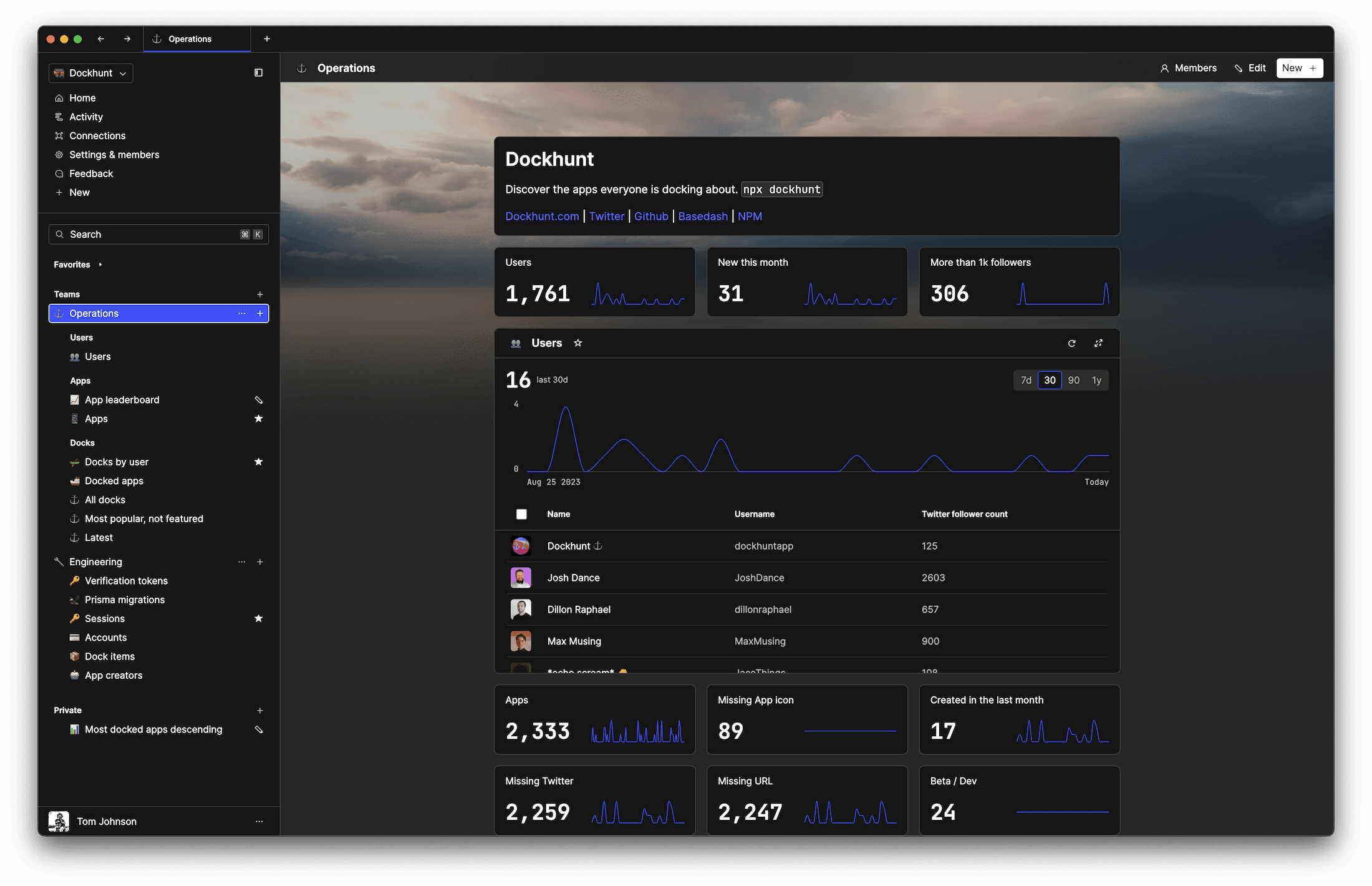
Related posts
Related posts
Related posts



How to Center a Table in HTML with CSS
Jeremy Sarchet



Adjusting HTML Table Column Width for Better Design
Robert Cooper



How to Link Multiple CSS Stylesheets in HTML
Robert Cooper



Mastering HTML Table Inline Styling: A Guide
Max Musing



HTML Multiple Style Attributes: A Quick Guide
Max Musing



How to Set HTML Table Width for Responsive Design
Max Musing
